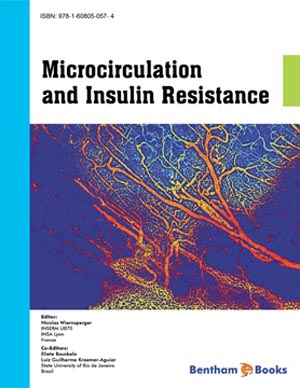Abstract
It became evident in the last years that an increased vascular risk is not only associated with frank diabetes, but also already with states of insulin resistance. This risk does not only affect the large vessels contributing to the augmented cardiovascular risk often observed in insulin resistant patients, but also various functions of the microvasculature. Here we present some evidence that insulin resistant states are clearly associated with an increased formation of reactive oxygen species (ROS) and linked to a state often called “oxidative stress”. Various mechanisms (NADPH-oxidase, disturbed mitochondrial function, uncoupling of nitric oxide synthase) may contribute to oxidative stress, but may also aggravate insulin resistance. It is discussed whether both oxidative stress and insulin resistance are causally linked and why oxidative stress leads to various defects of microvascular function (changes in vasomotion, permeability, reduced capillary bed, induction of apoptosis, changes in gene expression by activation of transcription factors (NFkappB, AP-1, STAT).






















